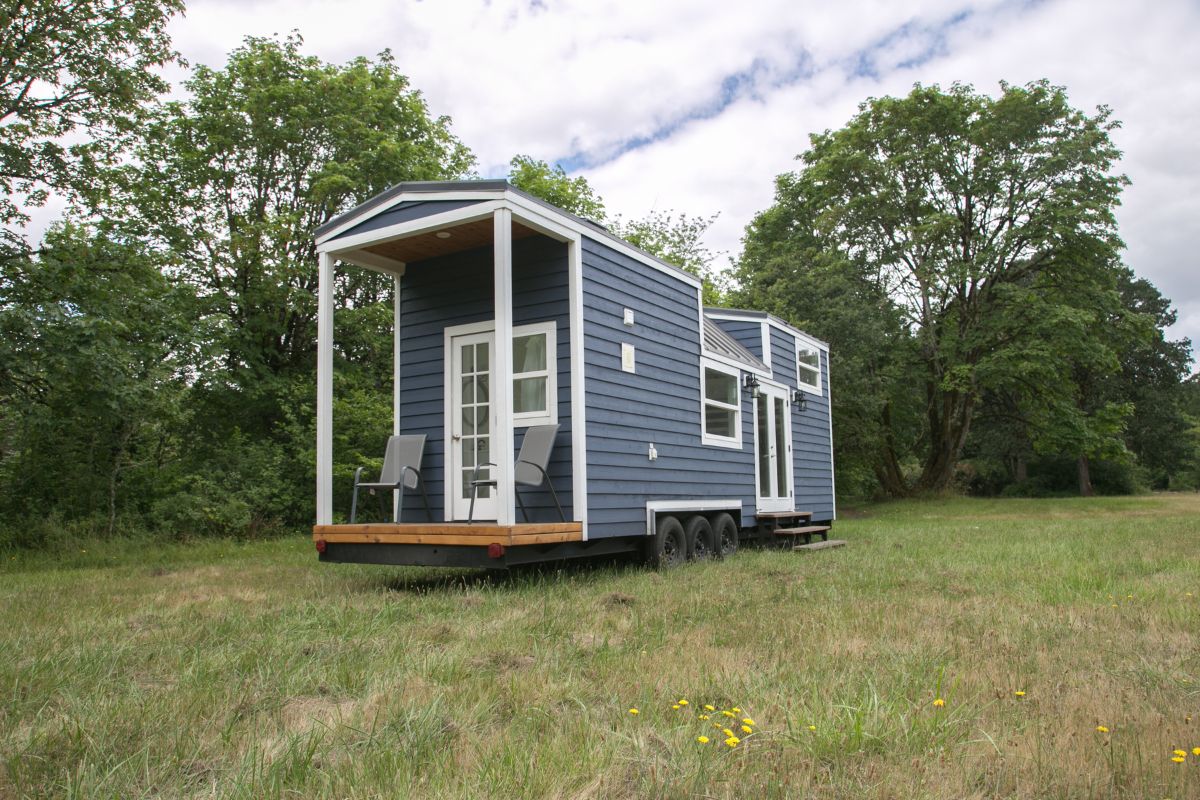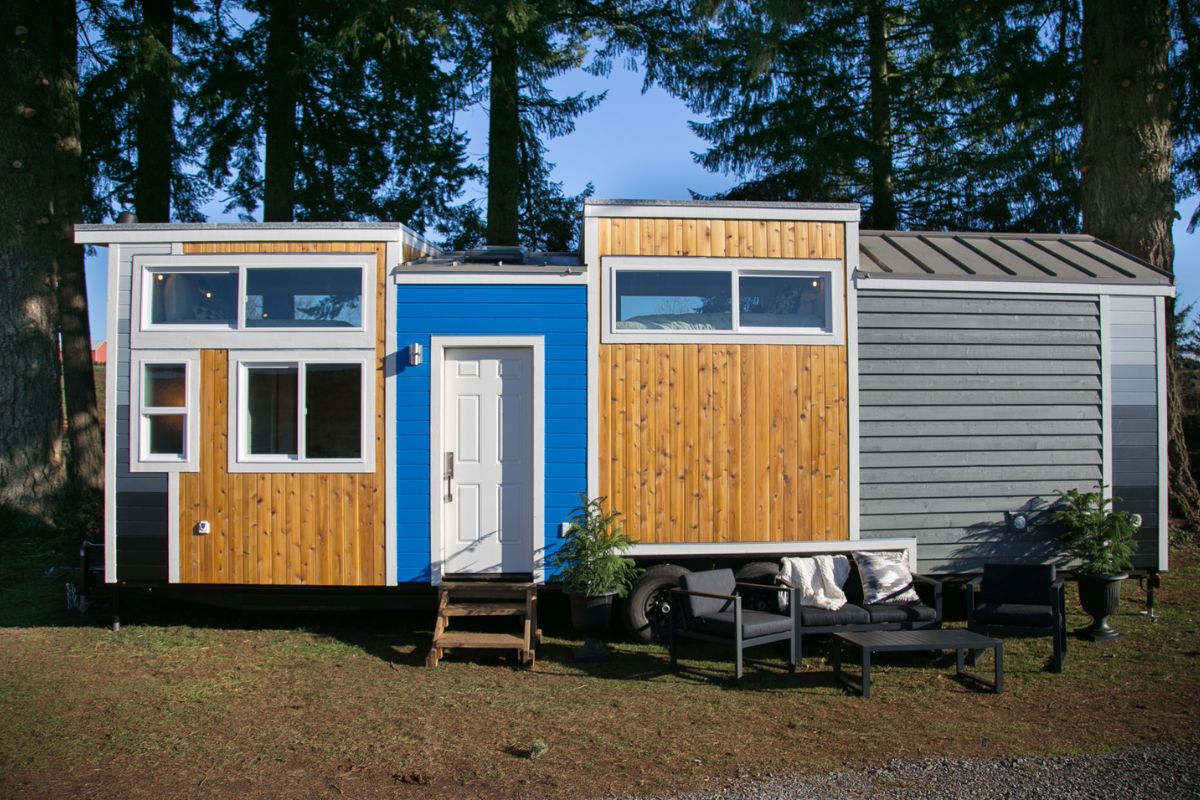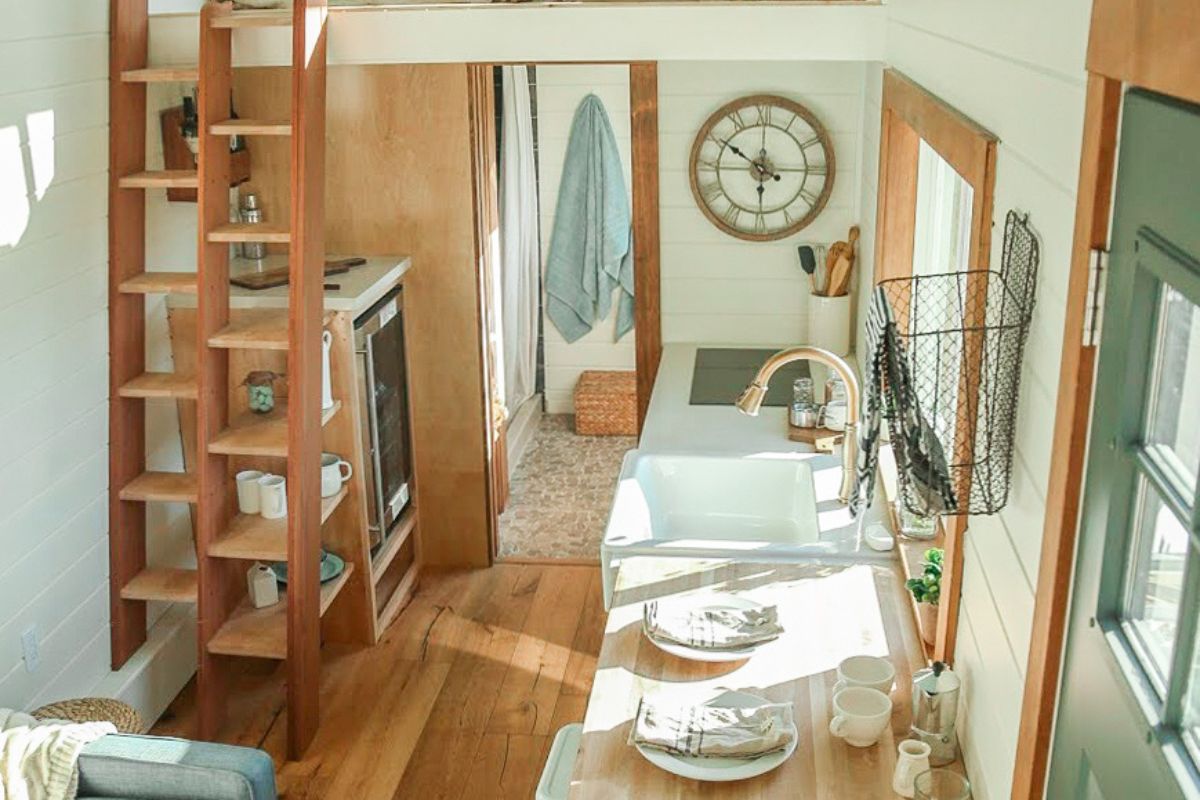When buying land for your tiny house, start by checking zoning laws and regulations, as they can vary greatly. Make certain to assess utility access and infrastructure to guarantee you have water, electricity, and sewage.
Look into the land's topography and soil quality to avoid future construction issues. Finally, consider the location's proximity to amenities you need. Each step is essential for a smooth process, so keep going to uncover more tips and insights.
Key Takeaways
-
Research local zoning laws and regulations for tiny homes to ensure compliance and avoid legal issues.
-
Evaluate access to essential utilities like water, electricity, and sewage for comfortable living.
-
Conduct soil tests to assess land quality and drainage capabilities for construction and gardening.
-
Assess proximity to amenities such as grocery stores and medical facilities to enhance daily living experience.
-
Explore various financing options, including traditional loans and seller financing, to fund your land purchase.
Understanding Zoning Laws and Regulations
Before you plunge into purchasing land for your tiny house, it’s crucial to grasp the zoning laws and regulations that apply to your desired location. These laws dictate what you can and can't do with your property, including size restrictions, building codes, and land use. Different areas may have specific requirements for tiny homes, such as minimum square footage or foundation options.
Research local zoning ordinances and speak with city planners or officials to clarify any doubts. Don’t forget to check for any homeowners' association rules, as they may impose additional restrictions. Understanding these regulations not only saves you time and money but also guarantees your tiny house dream becomes a reality without legal hurdles.

Assessing Utility Access and Infrastructure
How do you guarantee your tiny house runs smoothly? Evaluating utility access and infrastructure is key. First, check if the land has access to essential utilities like water, electricity, and sewage. If not, you may need to contemplate alternative solutions, such as solar panels or composting toilets, which could increase your costs.
Next, investigate the infrastructure in the area. Are there reliable internet options? What about access roads? These factors can impact your daily life and the value of your property. Additionally, talk to local utility companies to understand connection fees and installation timelines. Knowing these details upfront helps you make informed decisions and guarantees your tiny house experience is enjoyable and hassle-free.
Evaluating Land Topography and Soil Quality
When buying land for your tiny house, evaluating the land's topography and soil quality is essential. Start by examining the land's slope; a gentle incline can provide excellent drainage, while a steep slope may pose challenges. Look for flat areas that’ll make construction easier.
Next, assess the soil quality. Conduct a soil test to check for nutrients, pH levels, and drainage capabilities. Well-draining soil is ideal for foundations and gardening. Avoid land with heavy clay or overly sandy soil, which can lead to structural issues. Additionally, consider the vegetation; healthy plants often indicate fertile soil. By carefully evaluating these factors, you’ll guarantee your tiny house has a stable and sustainable foundation.
Considering Location and Proximity to Amenities
While you may be excited about the prospect of building your tiny house, considering the location and its proximity to amenities is crucial for your overall lifestyle. Think about what you value most—whether it’s access to grocery stores, medical facilities, or recreational areas. A well-chosen location can greatly enhance your daily life.
Evaluate the distance to essential services and community resources. Are you close to public transportation, parks, or cultural attractions? Also, consider the vibe of the neighborhood. You’ll want to make sure it aligns with your lifestyle preferences.
Researching Property Taxes and Costs
After narrowing down your preferred location and amenities, it’s important to turn your attention to property taxes and overall costs associated with purchasing land for your tiny house. Start by researching the local tax rates, as they can vary considerably by county or state. Look into any additional fees, such as homeowners’ association dues or special assessments, which could impact your budget.
Don’t forget to factor in costs related to land preparation, including clearing, grading, and utility connections. Additionally, consider ongoing expenses like insurance and maintenance. By gathering this information upfront, you’ll have a clearer picture of your total investment and can make informed decisions as you move forward in your tiny house journey.
Examining Environmental Factors and Restrictions
Before committing to a piece of land for your tiny house, you'll want to assess environmental factors and any restrictions that could affect your plans. Start by checking for zoning laws that dictate what you can build and where.
Look into local regulations regarding water access, sewage disposal, and waste management, as these can vary considerably. Additionally, consider the land’s topography and proximity to natural hazards, like flood zones or wildfire-prone areas. It’s also wise to research any conservation easements or environmental protections that might limit development. By understanding these factors upfront, you’ll avoid potential setbacks and guarantee your tiny house dreams align with local requirements and the surrounding ecosystem.
Exploring Financing Options for Land Purchase
Once you’ve secured a suitable piece of land for your tiny house, it’s time to contemplate how you’ll finance the purchase. Start by exploring traditional bank loans, which often require a solid credit score and a down payment. Alternatively, consider a personal loan if you prefer quicker access to funds without the lengthy approval process.
If you’re purchasing land in conjunction with a tiny house, a construction loan might be an option. Don’t overlook seller financing, either; some sellers may offer flexible terms. Finally, check local credit unions or community banks, as they might have specialized programs for land purchases. Assess your financial situation and choose the option that best fits your needs and budget.

Navigating the Land Purchase Process
How do you navigate the often complex land purchase process? First, start by identifying your budget and desired location. Research zoning laws to guarantee your tiny house can be placed on the land. Once you've found a suitable parcel, get a real estate agent who understands your needs. They’ll help you evaluate the land, handle negotiations, and guide you through the paperwork.
Before making an offer, conduct a title search to verify there are no liens or issues. After your offer’s accepted, you’ll need to arrange for an inspection and secure financing if necessary. Finally, review all documents carefully before closing to confirm everything’s in order. With diligence, you’ll successfully purchase the perfect spot for your tiny home.
Planning for Tiny House Construction and Placement
As you plan for your tiny house construction and placement, it’s important to evaluate both your design preferences and the land's unique characteristics. Consider the orientation of your tiny house; positioning it to maximize natural light and views can enhance your living experience. Think about access to utilities like water, electricity, and sewage, as these will influence your construction choices.
Assess the terrain, soil quality, and any zoning regulations that may impact your build. Remember, your tiny house needs to fit within the overall landscape while adhering to local codes. Finally, don’t forget about future expansions or landscaping; plan for what you might want in the future, ensuring your space remains functional and enjoyable for years to come.
Tips for Long-term Land Investment and Maintenance
While investing in land for your tiny house, it's important to reflect on long-term maintenance and potential appreciation. First, consider the location; areas with growing amenities or infrastructure often see better appreciation. Regularly inspect your land for drainage, vegetation, and pest issues to maintain its value.
Keep your property clean and free from debris, as this not only enhances aesthetics but also prevents potential hazards. Additionally, form relationships with local authorities to stay updated on zoning laws and land use changes. Investing in sustainable practices, like planting native trees or installing rainwater systems, can also boost your land's value. By proactively maintaining your land, you guarantee it remains a valuable asset for years to come.
Conclusion
To sum up, buying land for your tiny house involves careful consideration of zoning laws, utility access, and location. By researching property taxes and exploring financing options, you can make an informed purchase. Remember to plan for construction and think about long-term investment in your land.
With the right approach, you’ll create a sustainable living space that meets your needs. Now that you have the tools, it’s time to begin your tiny house journey!






Share: